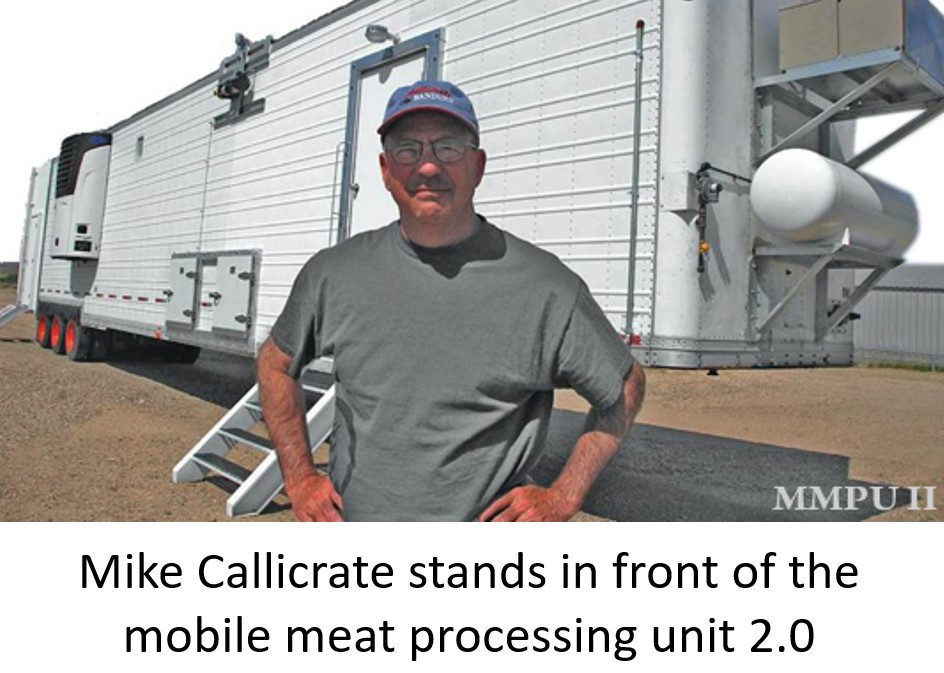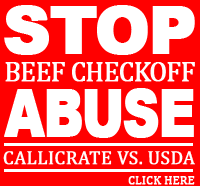
Scientists Suspect Livestock-Feed Additives Are Behind Distress
By JESSE NEWMAN and KELSEY GEE
Tyson Foods has suspended purchases of animals fed with the additive Zilmax. Shown, workers at a Tyson unit trimmed beef in Nebraska last year.
A growing number of cattle arriving for slaughter at U.S. meatpacking plants have recently shown unusual signs of distress. Some walked stiffly, while others had trouble moving or simply lay down, their tongues hanging from their mouths. A few even sat down in strange positions, looking more like dogs than cows.
“I’ve seen cattle walking down a truck ramp tippy-toed,” said Temple Grandin, a doctor of animal science and consultant to the livestock industry. “Normally, they just run down the truck ramp and jump out. We do not want to see bad become normal.”

Agence France-Presse/Getty Images
With few other changes to animals’ diets that could trigger such symptoms, Dr. Grandin and other scientists involved with the livestock industry began to suspect a tie to weight-gain supplements called beta-agonists that have only recently become widely used.
Cattle at a farm in Iowa
On Friday, drug maker Merck & Co. said it would temporarily suspend sales of Zilmax, one such feed additive, responding to widening animal-welfare concerns within the U.S. beef industry over the use of pharmaceuticals in meat production.
“Over 25 million cattle have been fed Zilmax since it was approved in the U.S., and I’m pretty sure we didn’t miss anything in those safety and efficacy studies, which were reviewed by regulatory agencies,” said KJ Varma, senior vice president of research and development at Merck’s animal-health unit, in an interview.
 Merck said it plans to perform a new study of the drug’s effects on cattle, with an animal-health advisory board made up of company-appointed researchers who will design the study.
Merck said it plans to perform a new study of the drug’s effects on cattle, with an animal-health advisory board made up of company-appointed researchers who will design the study.
The Merck announcement came more than a week after Tyson Foods Inc., TSN -7.34% the largest U.S. meat processor by sales, told cattle suppliers it would suspend purchases of animals fed with Zilmax on account of ambulatory problems that the company observed, and suggestions by health experts that the drug might be the cause.
Originally designed to alleviate asthma in humans, beta-agonists are mixed into cattle feed during the final weeks before slaughter to promote weight gain by stimulating the growth of lean muscle instead of fat. They aren’t hormones, but Zilmax, or zilpaterol, can add roughly 2%—or 24 to 33 pounds—to an animal’s final weight. Its rival, ractopamine-based Optaflexx, can add as much as 20 pounds.
Beta-agonists such as Zilmax and Optaflexx, which is made by Eli Lilly LLY -1.08% & Co.’s Elanco animal-health unit, are products of an expanding business of supplements and antibiotics developed in recent years to help livestock gain weight quickly or prevent illness among the animals.
Since the twin drugs won approval from the U.S. Food and Drug Administration in 2006 and 2003, respectively, they have grown in popularity, and are used in roughly 70% of U.S. cattle sold to slaughterhouses, according to Merck. Zilmax sales in the U.S. and Canada totaled $159 million in 2012.
“While FDA has received a very small number of reports of lameness or lying down in cattle treated with zilpaterol, we are always interested in new information about the safety and effectiveness of approved animal drugs,” said a representative for the agency.
Cattle feeders increasingly adopted beta-agonists as years of severe drought drove prices for corn—the main ingredient in cattle feed—to record highs, before an expected huge crop this year caused the prices to moderate.
As “grain prices accelerated, the margins got extremely squeezed in our business,” said Gerald Timmerman, a third-generation cattle rancher and feeder whose family owns livestock operations in Nebraska and Colorado. “That was the catalyst that drove demand for Zilmax up.”
These days, he said, “you can drive through a feed yard and spot every one [of the cattle] that’s on it. They look like muscle-bound athletes. …From a personal standpoint, I felt it was not the right thing to do.”
The additives have also taken away one of the feed-lot operators’ key bargaining chips, the ability to time when they send cattle to the packing plant to get the best price.
“Now, you only have so many days after an animal has been fed [a beta-agonist] before it’s got to go to slaughter or it becomes so lame it can’t move,” said Mike Callicrate, a cattle producer in Colorado Springs, Colo.
Despite the drought, average carcass weights have risen during recent years. Two weeks ago, the average live-steer weight at the time of slaughter was 1,409 pounds. For the same time in 2010, the average was 1,329 pounds. In 2007, it was 1,302.
Meatpackers, who face low head counts for cattle and are looking for another way to expand the amount of meat they can sell, are simultaneously encountering a growing global demand for drug-free meat.
In June, Smithfield Foods Inc., SFD -0.12% the world’s largest hog farmer and pork processor, dedicated half of its slaughter capacity to processing hogs that were never fed ractopamine, a beta-agonist that was banned in Russia in 2012, and also prohibited from use in hogs destined for China or the European Union.
“The company is leveraging its integrated platform to address the growing demand for ractopamine-free pork, primarily in export markets,” said a Smithfield spokeswoman, of the company’s ownership of both its hog-production and processing units.
Removing Optaflexx from cattle and hog feed would require that producers on aggregate use an additional 91 million bushels of corn a year, said an Elanco spokeswoman. It would also require 10 million more head of cattle on a yearly basis to produce the same amount of meat without beta-agonists and other commonly used growth-enhancing technologies, including steroid implants.
Tyson said in an email that its recent ban on Zilmax-fed animals isn’t motivated by a desire to access export markets, but rather “our own, recent animal welfare observations, as well as input from independent veterinarians and outside cattle research and animal welfare experts.”
Since Tyson’s announcement, National Beef Packing Co. of the U.S. and JBS SA JBSS3.BR -3.13% of Brazil, two major meatpackers, have said they don’t plan to change their own cattle-buying practices.
JBS spokesman Cameron Bruett said the company, the world’s largest meat processor, has also noticed ambulatory problems in cattle arriving at its slaughter facilities, but hasn’t been able to determine a direct cause. If a link to beta-agonists becomes clear, he said, JBS “might take a different approach.”
Cattle feeders say beta-agonists affect animals unevenly, and more acutely in hot weather than cold. Some have reported respiratory issues or increased aggression in animals fed with beta-agonists. Many have seen no adverse effects at all.
Guy Loneragan, a veterinary epidemiologist and professor of food safety and public health at Texas Tech University, has found a 70% to 90% greater incidence of death in animals fed with beta-agonists. Still, death among cattle in the final stages of feeding is rare.
“We’re at a stage now where we’ve collected a number of adverse events that seem to be related to their use,” Dr. Loneragan said. “The onus is upon the industry, particularly the drug manufacturers, to identify the specific causes of what we’re seeing, and find solutions to prevent it from happening.”
Some opponents of beta-agonists suggest the drugs pose concerns beyond animal welfare, and could have environmental and human health effects that have yet to be closely studied.
“It’s not good for anyone for animals to be showing up at the slaughter house that aren’t 100% healthy,” said Frank Garry, a veterinarian and professor in clinical sciences at Colorado State University. “Whether it’s the drug or not, that’s what we need to find out.”
Write to Kelsey Gee at kelsey.gee@dowjones.com
A version of this article appeared August 18, 2013, on page B1 in the U.S. edition of The Wall Street Journal, with the headline: What’s Ailing America’s Cattle?.
 “The money and political power of Wall Street has stolen America’s food system, bankrupted our farmers and ranchers, mined our soils, polluted our environment, wasted our precious water, and left us with expensive industrially produced food that makes us sick.” – Occupy Wall Street Food Day, December 2011
“The money and political power of Wall Street has stolen America’s food system, bankrupted our farmers and ranchers, mined our soils, polluted our environment, wasted our precious water, and left us with expensive industrially produced food that makes us sick.” – Occupy Wall Street Food Day, December 2011

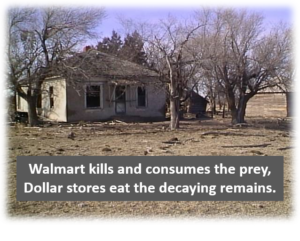
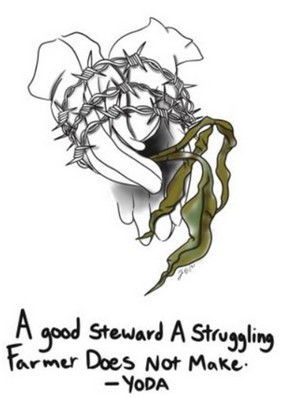
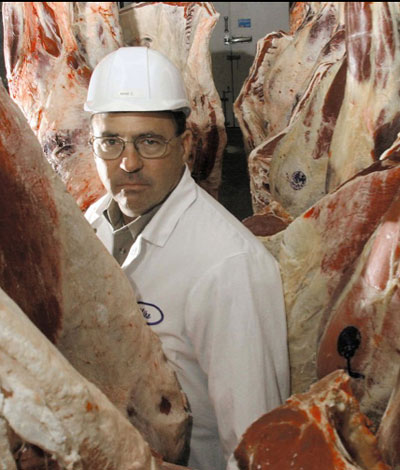 Photo: Sean Cayton - 2003People producing good food from happy animals, while improving the environment, shouldn’t have to fear the government.
Photo: Sean Cayton - 2003People producing good food from happy animals, while improving the environment, shouldn’t have to fear the government.




 Merck said it plans to perform a new study of the drug’s effects on cattle, with an animal-health advisory board made up of company-appointed researchers who will design the study.
Merck said it plans to perform a new study of the drug’s effects on cattle, with an animal-health advisory board made up of company-appointed researchers who will design the study.

